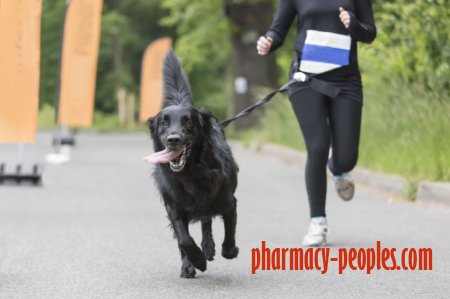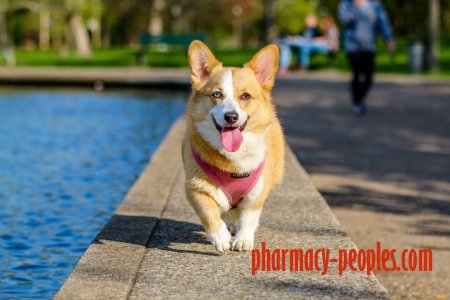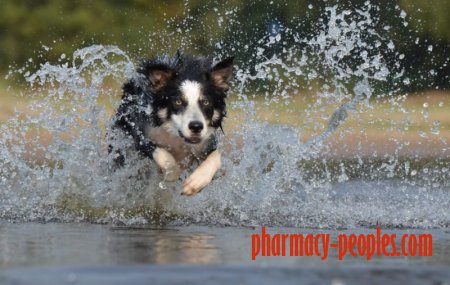How To Turn Your Dog Into A Running Partner
If you’re physically active and fond of exercising or running, you can involve your pet so that he also gets the right amount of physical activity each day. Dogs make great running partners – they won’t bother you with talk plus it’s a great way to bond with your pet. But like you did in the beginning, your furry friend needs training until he reaches your pace. It may take a while, but with the right approach, you’ll soon have the best running partner!
Take Your Vet Advice
The first step is to ask your vet if your buddy can make such an effort. This is no different from when we need medical clearance for exercising. You need to make sure your dog is in good health and shape.
Dogs can’t complain as we do, so you need to consistently check for health issues that you might be unaware of. Moreover, your dog might need dietary changes to keep up with the effort, so pay attention to nutrition.
Experts recommend that a canine must be at least a year old before he starts with a running routine as puppies can easily get injured if exposed to rigorous physical activities too soon. If your pet is old enough, it is still idea to confirm with your vet if he’s both mentally and physically ready to begin a running program.
Consider the Breed and Age
Your dogs’ breed will definitely tell you whether your buddy will be the type of dog that wants to be trained and also wants to run. There are some breeds like the Pug, which are prone to respiratory issues that can be aggravated by running. And this is not the only breed which might have to suffer by making this effort.
Furthermore, you should seriously take your dog’s age into consideration. A puppy has more energy and you can easily learn it how to behave at a young age. But be aware that its bones are growing. Just make sure you have your vet approval.
Warm Up
A warm-up is necessary for your dog as much as it is for you, especially before the first run. You both need to prepare your muscles for effort. You can start with walking or slow jogging.
This can protect both of you from injuries, as you wouldn’t want to see your buddy suffering. Moreover, while you are warming up, your dog will have enough time for pees and poops, which means fewer stops while running.
Take the first run slow
When your dog is used to your walking routine, you can slowly introduce the first run. Begin with an average speed walk, inserting a few minutes of slow run from time to time. Stop totally if your pet tries to pull away and continue rewarding him with treats if he does well. Keep the first run less than a mile and be observant about your dog’s condition. If he is panting heavily or lays down in exhaustion, it’s time to stop. It’s also important that you have water ready at all times.
Take Care of the Paws
After every run, you should check their paws for injuries. When the weather is very hot in the summer, their paws are likely to get burnt, so you better leave your buddy at home or make your trail on the ground and not on the asphalt.
Same applies to the winter season. Go for a route that was not treated with salt, as this mineral can sting the dog’s feet. If they lick their paw, it may disturb their stomach. You can use canine booties in these situations.
Build up endurance
Like us, our furry friends need to be properly conditioned to build up endurance for daily runs. As your pet gets used to your running routine, walk less and run more until walking is no longer needed. Pick up the pace as time goes by.
With and Without Leash
Remember that not everyone is a dog lover and keep your buddy in leash while you are running around other people. However, do not tighten up the leash because it may be uncomfortable while running.
If you have a place where you can set your dog free, this would make your best friend very happy. However, unless you’re sure that there are no dangers around, you shouldn’t walk your homie without a lead.
Stop immediately if Fido gets too far ahead
If his feet are ahead of you, stop immediately. Be sure to stop before he gets to the point that he’s pulling on the lead. When he turns to look at you, ask him to sit and once he’s refocused and looking at you, set off again. It can be tedious but you must repeat this sequence every time he pulls ahead. Before too long, he will understand that every time he runs too far ahead, it causes you to stop completely and ruin all his fun. He’ll soon realise that the only way to keep the fun going is to remain level with you and avoid pulling.
Gradually pick up speed
Once he has nailed the technique of heeling at a brisk walk pace, increase the pace gradually over the course of a few outings. At first, try a mixture of a fast walk with some jogging thrown in. Then a full jog until he’s finally ready to start keeping up with you at running pace.
Take Breaks
Your dog may need more breaks than you do. They can’t talk, but when a break is needed, your dog will let you know. The most usual signs are refusing to run and panting heavily. However, each dog gives different signs so keep your eyes open. If you notice anything unusual or any of these mentioned signs, allow your dog to rest and hydrate.
Stay safe
As they can’t sweat to cool like humans do, a dog’s main method to cool down is panting. Keep an eye on your pooch and be aware that if he starts getting too hot, it’s time to slow down or stop completely. Panting quietly with his tongue inside his mouth is a sign that he’s dealing with the heat well. If his mouth is wide open with tongue hanging out, it’s time to take a break. And remember, if your run is so intense that you’ll need water, your dog will need it too!
Here are 10 tips and tricks to train and run with your dog in the most effective way
Take Your Vet Advice
The first step is to ask your vet if your buddy can make such an effort. This is no different from when we need medical clearance for exercising. You need to make sure your dog is in good health and shape.
Dogs can’t complain as we do, so you need to consistently check for health issues that you might be unaware of. Moreover, your dog might need dietary changes to keep up with the effort, so pay attention to nutrition.
Experts recommend that a canine must be at least a year old before he starts with a running routine as puppies can easily get injured if exposed to rigorous physical activities too soon. If your pet is old enough, it is still idea to confirm with your vet if he’s both mentally and physically ready to begin a running program.
Consider the Breed and Age
Your dogs’ breed will definitely tell you whether your buddy will be the type of dog that wants to be trained and also wants to run. There are some breeds like the Pug, which are prone to respiratory issues that can be aggravated by running. And this is not the only breed which might have to suffer by making this effort.
Furthermore, you should seriously take your dog’s age into consideration. A puppy has more energy and you can easily learn it how to behave at a young age. But be aware that its bones are growing. Just make sure you have your vet approval.
Warm Up
A warm-up is necessary for your dog as much as it is for you, especially before the first run. You both need to prepare your muscles for effort. You can start with walking or slow jogging.
This can protect both of you from injuries, as you wouldn’t want to see your buddy suffering. Moreover, while you are warming up, your dog will have enough time for pees and poops, which means fewer stops while running.
Take the first run slow
When your dog is used to your walking routine, you can slowly introduce the first run. Begin with an average speed walk, inserting a few minutes of slow run from time to time. Stop totally if your pet tries to pull away and continue rewarding him with treats if he does well. Keep the first run less than a mile and be observant about your dog’s condition. If he is panting heavily or lays down in exhaustion, it’s time to stop. It’s also important that you have water ready at all times.
Take Care of the Paws
After every run, you should check their paws for injuries. When the weather is very hot in the summer, their paws are likely to get burnt, so you better leave your buddy at home or make your trail on the ground and not on the asphalt.
Same applies to the winter season. Go for a route that was not treated with salt, as this mineral can sting the dog’s feet. If they lick their paw, it may disturb their stomach. You can use canine booties in these situations.
Build up endurance
Like us, our furry friends need to be properly conditioned to build up endurance for daily runs. As your pet gets used to your running routine, walk less and run more until walking is no longer needed. Pick up the pace as time goes by.
With and Without Leash
Remember that not everyone is a dog lover and keep your buddy in leash while you are running around other people. However, do not tighten up the leash because it may be uncomfortable while running.
If you have a place where you can set your dog free, this would make your best friend very happy. However, unless you’re sure that there are no dangers around, you shouldn’t walk your homie without a lead.
Stop immediately if Fido gets too far ahead
If his feet are ahead of you, stop immediately. Be sure to stop before he gets to the point that he’s pulling on the lead. When he turns to look at you, ask him to sit and once he’s refocused and looking at you, set off again. It can be tedious but you must repeat this sequence every time he pulls ahead. Before too long, he will understand that every time he runs too far ahead, it causes you to stop completely and ruin all his fun. He’ll soon realise that the only way to keep the fun going is to remain level with you and avoid pulling.
Gradually pick up speed
Once he has nailed the technique of heeling at a brisk walk pace, increase the pace gradually over the course of a few outings. At first, try a mixture of a fast walk with some jogging thrown in. Then a full jog until he’s finally ready to start keeping up with you at running pace.
Take Breaks
Your dog may need more breaks than you do. They can’t talk, but when a break is needed, your dog will let you know. The most usual signs are refusing to run and panting heavily. However, each dog gives different signs so keep your eyes open. If you notice anything unusual or any of these mentioned signs, allow your dog to rest and hydrate.
Stay safe
As they can’t sweat to cool like humans do, a dog’s main method to cool down is panting. Keep an eye on your pooch and be aware that if he starts getting too hot, it’s time to slow down or stop completely. Panting quietly with his tongue inside his mouth is a sign that he’s dealing with the heat well. If his mouth is wide open with tongue hanging out, it’s time to take a break. And remember, if your run is so intense that you’ll need water, your dog will need it too!
- Health / Fitness
- 14-03-2018, 15:47
- 1 459
- Pharmatic





